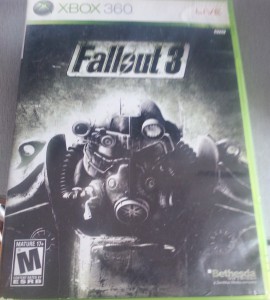Kelvin Moncion ENG1101
Prof. Ellis NYCCT
I am Kelvin Moncion, I am a student in New York City College of Technology my current major that I study is Communication Design. In the near future I plan on following a career path of a game designer, gaming has always been a passion for me so it’s no surprise I want to go for it. This is probably the best career for me because, I’ve always been a creative person and in this field creativity is a must have and gaming is not just a hobby it could also be a way of life for me. This major will help me “demonstrate conceptual and creative design skills with a professional portfolio”(NYCCT Catalog), doing so will help me advance further in the field, and since I feel like a have a knack for creativity this will help me even more. Another reason why I see this as my best choice is because, not only will this be my job but also I’ll be doing what I love and a job that you love is not really a job to you. It could also be fun working with a developing team and just chatting away about new ideas and what could be done with character designs, weapons, skills, etc.
I have given much thought on choosing this career path. The pay is pretty good, it won’t be a job since it’s my passion and video games has always been my thing as a kid through this day and probably in the future. As a game designer your beginner salary starts at $65,000 dollars a year and can go up to 100,000 plus more a year, which is amazing to read. Not only will I get paid greatly for it but, getting paid for what I enjoy, sounds great. As a beginner I probably won’t have many choices of working with the “big boys” like Ubisoft, Konami, Nintendo, Microsoft, and Sony, most likely beginners start off in 3rd party publishers. Third party publishers are companies that are small in popularity and also in man-power, usually they focus on in die games, some indie games come out to be successful so then that catches the attention of the big companies and they sign them up. Starting off small is always great, I’ll be picking up so much experience and it will become easier as time passes by. In my major Communication Design has a broad horizon, which extends into many careers them being: design, motion graphics or animation, illustration, game design graphics. This career offers elective classes that help you acquire skills in 2D and 3D animation. With my time in City Tech I want to improve certain skill sets, and expand my knowledge by learning these new things and acquiring new skills along the way, skills that will most likely help me in the future.
die games, some indie games come out to be successful so then that catches the attention of the big companies and they sign them up. Starting off small is always great, I’ll be picking up so much experience and it will become easier as time passes by. In my major Communication Design has a broad horizon, which extends into many careers them being: design, motion graphics or animation, illustration, game design graphics. This career offers elective classes that help you acquire skills in 2D and 3D animation. With my time in City Tech I want to improve certain skill sets, and expand my knowledge by learning these new things and acquiring new skills along the way, skills that will most likely help me in the future.
In an article I read, video games tend to focus on one thing only, and they follow certain elemental designs, “every computer game is designed around the same central element: the player.” (John Hopson). Basically, every video game has to focus on the player, without the player there would be no game, the player is the essential key since the he/she is going to be the one playing and enjoying the game, he/she has to enjoy the game to its full potential. When players see enjoying the game there are key parts in the player’s mind that lights up, this can help developers know what they’re doing wrong or right. This is pretty cool because usually it’s not that really looked into on how the brain can help developers, usually video games are linked to violent crimes that happened and you get an article saying “Video Games Fueled Someone’s Anger” which is nonsense in my opinion. The contingencies and schedules are a very important aspect of game design, “a contingency is a rule or set of rules governing when rewards are given out.” (Hopson). A contingency in a video game is when for example when your character levels up you get all sorts of new items, power ups etc. In arcade styled games power ups, and all the other goodies appear on random intervals or only appear when certain challenges are completed. These are one of the important aspects in game design field and it’s very helpful knowing that some type psychology is based on satisfying gamers. Ratios and intervals are fundamentals of contingencies, “ratio schedules provide rewards after a certain number of actions have been completed” (John Hopson), for example eliminating certain amount of enemies, and long bursts of action time to collect bonuses and power ups. The game design field has very small aspects that are very interesting and make for more entertaining and enjoyable game time.
I really like to let people enjoy a game, for example, like a book, I want to wrap the reader with the story he/she has to love the story that they can’t let go of the book. In Game Design 2 elements of design are involved there is 3D modeling and animation, 3D modeling is the model of the character how it’s going to look like, and animation is the movement of the character, like hands, walk, etc. “A Game Designer’s main function is to conceive the elements of gameplay, and to turn those elements into an interactive experience for the player to enjoy” (Richard Robledo). Although Game Design has many complexity into making certain games the root cause is always the player, it reminds me of a slogan I have “no player, no game”. By creating these elements of gameplay the player knows what’s going on and what he or she has to do next to level up, or progress to the next stage. It might sound like a fun job but Game Designers don’t spend their days just sitting around discussing a next project, “a Game Designer does not show up to work and simply write stories, character bios, and game ideas. Brainstorming and coming up with cool concepts are what a Designer does 10% of the time. The remaining 90% is comprised of the execution of the ideas; and, in order to make this happen, the Designer utilizes numerous artistic and technical tools.” (Richard Robledo), this is said because most of the time that’s the idea of a person, they think it’s an easy job when in reality it really isn’t. Most of the time a lot of thinking goes before making a game, and getting a good idea on the board. That c an take weeks maybe even months to get an idea going, then after that the team gets together designers, programmers, etc. to start the development of the game, games can last a couple years to design, getting the story together, and if it’s an open world game it’ll be huge, designing buildings, forests, or whatever scenario that’s being created. Programmers will deal with AI’s (artificial intelligence), the main character and how, and what he can interact with the world. It may seem simple at first, but a lot of work and thinking goes into a game, I really admire that this is why it’s a passion for me.
an take weeks maybe even months to get an idea going, then after that the team gets together designers, programmers, etc. to start the development of the game, games can last a couple years to design, getting the story together, and if it’s an open world game it’ll be huge, designing buildings, forests, or whatever scenario that’s being created. Programmers will deal with AI’s (artificial intelligence), the main character and how, and what he can interact with the world. It may seem simple at first, but a lot of work and thinking goes into a game, I really admire that this is why it’s a passion for me.
In conclusion, the future I am aiming for is for me, all the skills I have and can be improved. Game design is very important to me, and I have a passion for video games which helps me to follow my path. People who feel like following the same path can do the same thing, if they have a passion for game design and, or video games they should definitely go for it. Recommendations for others I feel are, that if you’re a creative person you should try it out, because following this career will help you with your creative thinking. This major helps with creativity and conceptual thinking which is something you will need to get through with this career path.
Work Cited
Hopson, John. “Behavioral Game Design.” Gamasutra Article. N.p., 27 Apr. 2001. Web. 5 May 2015
New York City College of Technology (City Tech). “Communication Design.” New York City College of Technology college catalog 2014-2015.
Robledo, Richard. “What Is a Video Game Designer?” What Is a Video Game Designer? N.p., 2012. Web. 7 May 2015
U.S. Bureau of Labor Statistics. “Game Designers” U.S. Bureau of Labor Statistics, n.d. Web. 3 May 2015.



